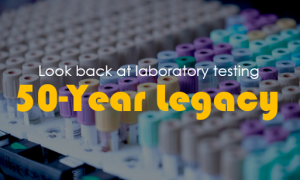In our first installment of 50 Years of Laboratory Testing, we explored the tools an underwriter had at their disposal during the 70s, 80s and 90s. Laboratory testing began to become essential for insurers then. Now, we will reflect on how things continued to change in the 2000s and into the new century.
Early 2000s
When the calendar turned to the 2000s, “preferred” rates had been offered for well over a decade and our own Betsy Sears was educating clients on the exploding “diabesity” crisis. Obesity was on the rise and with it an alarming increase in diabetes. APSs and Rx checks might identify a portion of at-risk applicants, but only for individuals actually diagnosed with diabetes or pre-diabetes. Other at-risk applicants were slipping through the cracks.
Studies prove cost effectiveness
In 2004, ExamOne once again partnered with a large client to study the protective value of routine A1c screening. A cost/benefit analysis was performed on 1 month of the client’s business with normal blood/urine glucose and no other indication of glucose intolerance or diabetes. The results showed a significant percentage of applicants with elevated A1c (5.7 and above) at ages 40+. (The study did not examine applicants under 40 years of age.) The annual present value of future mortality savings greatly exceeded the cost of testing. Routine A1c screening would soon be an industry norm.
Insurers continued looking for cost-effective ways to identify and reduce cardiovascular and cancer risks and deaths. By the early 2000s, numerous articles appeared in clinical literature regarding diagnosis and evaluation of heart failure by N-terminal pro-brain natriuretic peptide, or as our industry knows it, NT-proBNP. An article in the publication Clinical Chemistry (53:6, 1075-1083, 2007) noted, “Measurement of NT-proBNP can be used to predict mortality in patients with acute coronary syndromes.” It went on to say, “NT-proBNP is predictive of all cause and cardiovascular mortality in individuals with and without stable angiographic CAD independent of other cardiovascular risk factors, coronary atherosclerosis, and cardiac vocation.”
JAMA wrote, “Elevated levels of NT-proBNP predict cardiovascular mortality and morbidity, independent of prognostic markers, and identify at risk individuals even in the absence of systolic or diastolic dysfunction by echocardiography.” (01/10/2007, Vol297, No.2)
To gauge the effectiveness of BNP screening in an insurance population, ExamOne partnered with a large insurer in 2006 on a cost/benefit analysis of 2 consecutive months of business for applicants ages 65+ applying for policies with face value of $100K or greater. This study showed the annual protective value of routine BNP screening exceeded that of even A1c screening. A 2-year post validation study confirmed the original cost/benefit results. Interestingly, that insurer reported that one of the insureds from the original “blind” c/b study, an 82-year-old female, with a BNP reading of 825, died within 1 year died within 1 year of policy issue.
Other clients followed with routine BNP screening. By mid 2010, 2 dozen ExamOne clients were screening applicants with NT-proBNP to some extent. Subsequently, some insurers initiated screening for applicants in their 50s and for amounts below $100K.
Technology paving the way to the future
By the early 2000s, laboratory testing and its effectiveness had proven protective value and certain testing became the industry norm. With the introduction of Blackberrys, iPods, and the iPhone during those years, the world was exploding with new technology. How will innovations shape the next years of life insurance laboratory testing?
Our next blog post will continue with more flashbacks of laboratory testing for life insurance.




















In our first installment of 50 Years of Laboratory Testing, we explored the tools an underwriter had at their disposal during the 70s, 80s and 90s. Laboratory testing began to become essential for insurers then. Now, we will reflect on how things continued to change in the 2000s and into the new century.
Early 2000s
When the calendar turned to the 2000s, “preferred” rates had been offered for well over a decade and our own Betsy Sears was educating clients on the exploding “diabesity” crisis. Obesity was on the rise and with it an alarming increase in diabetes. APSs and Rx checks might identify a portion of at-risk applicants, but only for individuals actually diagnosed with diabetes or pre-diabetes. Other at-risk applicants were slipping through the cracks.
Studies prove cost effectiveness
In 2004, ExamOne once again partnered with a large client to study the protective value of routine A1c screening. A cost/benefit analysis was performed on 1 month of the client’s business with normal blood/urine glucose and no other indication of glucose intolerance or diabetes. The results showed a significant percentage of applicants with elevated A1c (5.7 and above) at ages 40+. (The study did not examine applicants under 40 years of age.) The annual present value of future mortality savings greatly exceeded the cost of testing. Routine A1c screening would soon be an industry norm.
Insurers continued looking for cost-effective ways to identify and reduce cardiovascular and cancer risks and deaths. By the early 2000s, numerous articles appeared in clinical literature regarding diagnosis and evaluation of heart failure by N-terminal pro-brain natriuretic peptide, or as our industry knows it, NT-proBNP. An article in the publication Clinical Chemistry (53:6, 1075-1083, 2007) noted, “Measurement of NT-proBNP can be used to predict mortality in patients with acute coronary syndromes.” It went on to say, “NT-proBNP is predictive of all cause and cardiovascular mortality in individuals with and without stable angiographic CAD independent of other cardiovascular risk factors, coronary atherosclerosis, and cardiac vocation.”
JAMA wrote, “Elevated levels of NT-proBNP predict cardiovascular mortality and morbidity, independent of prognostic markers, and identify at risk individuals even in the absence of systolic or diastolic dysfunction by echocardiography.” (01/10/2007, Vol297, No.2)
To gauge the effectiveness of BNP screening in an insurance population, ExamOne partnered with a large insurer in 2006 on a cost/benefit analysis of 2 consecutive months of business for applicants ages 65+ applying for policies with face value of $100K or greater. This study showed the annual protective value of routine BNP screening exceeded that of even A1c screening. A 2-year post validation study confirmed the original cost/benefit results. Interestingly, that insurer reported that one of the insureds from the original “blind” c/b study, an 82-year-old female, with a BNP reading of 825, died within 1 year died within 1 year of policy issue.
Other clients followed with routine BNP screening. By mid 2010, 2 dozen ExamOne clients were screening applicants with NT-proBNP to some extent. Subsequently, some insurers initiated screening for applicants in their 50s and for amounts below $100K.
Technology paving the way to the future
By the early 2000s, laboratory testing and its effectiveness had proven protective value and certain testing became the industry norm. With the introduction of Blackberrys, iPods, and the iPhone during those years, the world was exploding with new technology. How will innovations shape the next years of life insurance laboratory testing?
Our next blog post will continue with more flashbacks of laboratory testing for life insurance.